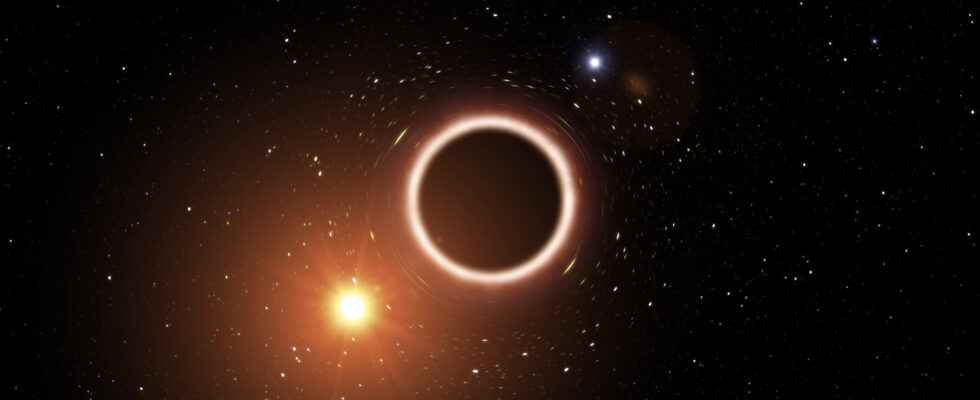A new black hole has been spotted. His particuliarity ? It is the closest to Earth discovered to date, less than 1,600 light-years away.
A new black hole has been discovered, and it is the closest to Earth discovered to date. According to a study published on November 2, notably taken up by NOIRLab, the black hole in question is located less than 1,600 light years away – a distance three times closer than the previous record in the matter.
” While there have been many detections of similar systems in the past, most of these discoveries have been disproved. This is the first unambiguous discovery of a solar-like star orbiting a black hole in our galaxy. “, welcomes Kareem El-Badry, astrophysicist. The black hole, dubbed Gaia BH1, is located in the constellation Ophiuchus (Serpentarius) and was observed from Hawaii.
A new record for a black hole
Scientists have been able to detect this black hole, whose size is estimated to be ten times that of the Sun, thanks to the movements of the star in orbit around it. This binary system also has a particularity: the black hole and the star are separated by the same distance as between the Earth and the Sun. ” Take the Solar System, put a black hole instead of the Sun and a sun instead of the Earth, and you get this system “Simplifies Kareem El-Badry.
How was this binary system formed? This is the main question posed by astronomers in the face of this discovery. Currently, there is no model to explain how such a system can exist. Given the observed configuration, the star that had become a black hole would have been at least 20 times more massive than the Sun. This size means that it would have lived only a few million years before engulfing the other star which is now orbiting the black hole. So there is an unknown in the equation.
On this point, Kareem El-Badry indicates: “ It is interesting to note that this system does not correspond to any of our models for the evolution of binary systems. Beyond its proximity to the Earth, this black hole is a source of new questions, which makes it all the more interesting. ” In addition to auguring future discoveries about the population of dormant black holes in our Galaxy, this discovery is at the origin of a mystery to be solved: despite a history shared with its exotic neighbor, why the companion star of this system binary so normal? concludes Martin Still, in charge of the NSF Gemini Program.
